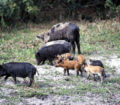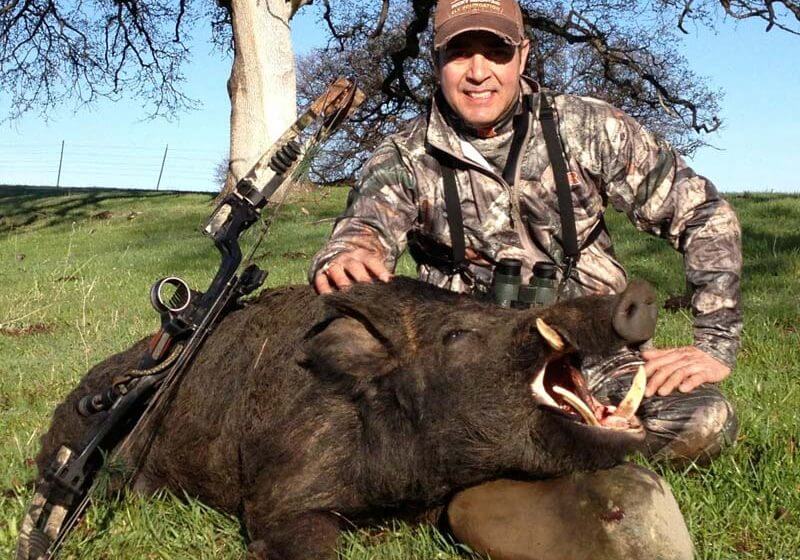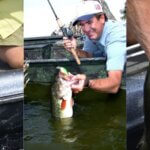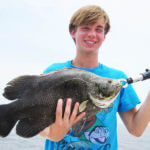Editor’s Note: No better sport exists for the bowhunter than hog hunting. You can hunt hogs throughout the South and in parts of the West at any time during the year, and you can bag as many hogs as you want, due to the destruction feral pigs cause to crops, their contamination of water supplies and their preying on ground nesting birds’ eggs, turkey poults, turkey hens sitting on their nests and just-born fawns. By using feeders and cameras, you can pinpoint where the hogs are moving and use the feeders to bait them, as most states allow you to bait hogs (check your local regulations). Whether you’re hunting in the thick palmettos of Florida, the oak brush of Texas and/or the briarpatches of Mississippi, you can pull ravenous wild porkers out of thick cover by baiting your feeder with corn.
Dr. Stephen Ditchkoff of Auburn University in Auburn, Alabama, has been studying feral hogs for about 15 years. In 2003, Auburn was asked to do a study of the feral-pig problem at Fort Benning, Georgia, and to develop a strategy to eliminate the hogs that were detrimentally impacting the property and interfering with the military training activities.
“The feral hog problem has been growing exponentially in the South for the last 25 years,” Ditchkoff explains. “Biologists have pockets of feral pigs popping up all over the state, because some hunters are trapping and releasing these hogs into new areas.
“Right now, feral hogs create a $50-million agricultural problem in just Alabama. We don’t have a way to calculate the amount of damage to non-agriculture, but we know pigs are damaging water quality, creating soil erosion and increasing sedimentation in streams and rivers. They’ve impacted food plots hunters plant and had negative impacts on wildlife – both game and non-game species. Hogs destroy the nests of ground-nesting birds like turkeys and quail and are impacting deer numbers.”
 Ditchkoff’s preliminary data suggests that deer numbers aren’t as high when pigs are in an area.
Ditchkoff’s preliminary data suggests that deer numbers aren’t as high when pigs are in an area.
The hogs compete with the deer for food. A graduate student at the University of Florida used trail cameras to study hogs and deer in central Florida. She learned that the deer avoided contact with the hogs, but the hogs didn’t mind the deer. Therefore the hogs got first use of acorns and supplemental food and monopolized the most-productive oaks. The wild pigs mainly ate vegetation and acorns but also mammals, reptiles, amphibians, invertebrates, birds – particularly wild turkey embryos and eggs – rats, rabbits, turtles, nutria, butterfly larvae, centipedes, crabs, cockroaches, earthworms, grasshoppers and crickets. According to Ditchkoff, “We even came across a pig eating a live deer fawn.”
Ditchkoff says that in the next 10 years he doesn’t think feral pigs will remove the deer, quail and turkeys from the South’s landscape. But he does believe they are having and will have a detrimental effect on these animals. Now you know the bad news about feral pigs, and why we need to eliminate these non-native animals that the first Spanish explorers brought with them in the mid-1500s to the southern U. S.
The Hog Solution:
“Trapping is the only real solution to eliminate hogs from a property,” Ditchkoff reports. “Hunting and shooting hogs isn’t an effective solution, although the hunter may feel good when he bags a porker.”
One of the key points of strategic trapping isn’t about how-many pigs you catch in a trap. The more-important factor is how many pigs did you not catch? If a group of 10 pigs are utilizing a region, and eight of those hogs are trapped, you won’t stop the hog problem.
“You have to get all 10,” Ditchkoff explains. “The two hogs you haven’t trapped will repopulate the area really quickly. The feral hog is one of the most-prolific reproducing large animals on earth. The second problem with the two pigs you haven’t trapped is these pigs now are educated as to what a trap is, and why to stay away from it. To trap all the pigs, you have to use a trapping strategy – whole sounder removal – that makes sure you catch all the pigs in the sounder (herd).
Alabama wildlife biologist, Matt Brock, says he’s heard of one northwest Alabama landowner who captured 49 hogs in a trap at one time.
Whole Sounder Removal:
Steve Ditchkoff names the five steps for the whole sounder removal program.
* Use trail cameras to identify where groups of feral hogs are.
* Identify the individual hogs in each group. Then you’ll know how many you have to catch in the trap to catch the entire group.
* Build a trap. “When we build our traps,” Ditchkoff says, “we want to make sure the trap is big enough to catch all the pigs in that sounder. Or, we’ll build two or three traps side by side and tie the doors to them open.”
 * Bait them, bait them, bait them. Continue to bait the pigs until you know for certain that all the pigs are moving into the trap at the same time. Then set the trigger on the trap to cause the door to fall to capture all the pigs at one time. Some people set traps and use their cell phones to trigger closing the traps.
* Bait them, bait them, bait them. Continue to bait the pigs until you know for certain that all the pigs are moving into the trap at the same time. Then set the trigger on the trap to cause the door to fall to capture all the pigs at one time. Some people set traps and use their cell phones to trigger closing the traps.
By setting two or three traps side by side, if you don’t get all the pigs in one trap, generally, the pigs will go into the second and third traps, which also have been baited the same as the first trap. Ditchkoff mentions that technology has given us an even-more-effective way to make sure we have all the pigs in the trap before the trigger goes off and the door falls, preventing the pigs from getting out of the trap. “You can buy a door and an electronic trigger that will drop the door when you see all the pigs in the trap for $2,500, a system particularly effective for people who live away from the property where they’re trying to trap pigs.”
* Dispatch the pigs, and give the meat to a food bank, or eat it yourself. Make sure you continue to bait and leave your trail cameras up, until you’re totally satisfied you’ve caught all the pigs in that sounder.
“The number of hogs you catch doesn’t really matter,” Ditchkoff emphasizes. “You have to make sure you remove the reproductive element of the sounder – the sows.”
The Latest Wild Hog Information:
The latest estimate of feral hog numbers in the U. S. is 9 million pigs, according to the Southeast Cooperative Wildlife Disease Study (SCWD) (http://vet.uga.edu/scwds) at the University of Georgia. This group explains that 35 states have established hog populations but that 98 percent of them live in the 15 southeastern states and Oregon and California. According to research, a landowner must remove 50-70 percent of a local hog population (mainly sows and juveniles) annually to bring the population under any type of control.
Texas Parks and Wildlife Department has created an euthanasia trailer for the state’s 3 million feral pigs. The self-contained trailer is backed up to a corral trap, and the hogs in it are herded through a chute into a trailer that’s flooded with carbon dioxide to kill the hogs in a few minutes. The carbon dioxide doesn’t harm the pork, which then can be donated to food banks. In the past, to stop the spread of hogs, Alabama’s Department of Conservation and other states made transporting hogs from one parcel of land to another in the same state illegal. Today, in Alabama, the regulation states that if a feral hog comes into your possession, you’re required by law to kill that hog. You no longer can release a hog – even on the same property – where you’ve caught it. Other southern states enforce similar regulations.
 Important Information about Removing Feral Pigs:
Important Information about Removing Feral Pigs:
You can learn more at:
* The Alabama Cooperative Extension Service conducts hog-trapping seminars and loans out a trap door for free – www.aces.edu and other states do too.
* The Natural Resources Conservation Service (NRCS) – www.nrcs.usda.gov.
“The National Resources Conservation Service (NRCS) offers financial assistance to landowners who are trapping hogs on private lands, if the landowner meets certain requirements, to try and determine the damage that hogs are doing to the land and the effectiveness of trapping to reduce that damage,” the State of Alabama’s hog program coordinator, Matt Brock, reports.
To learn more about hunting, see John E. Phillips’ hunting books at https://johninthewild.com/books.
















